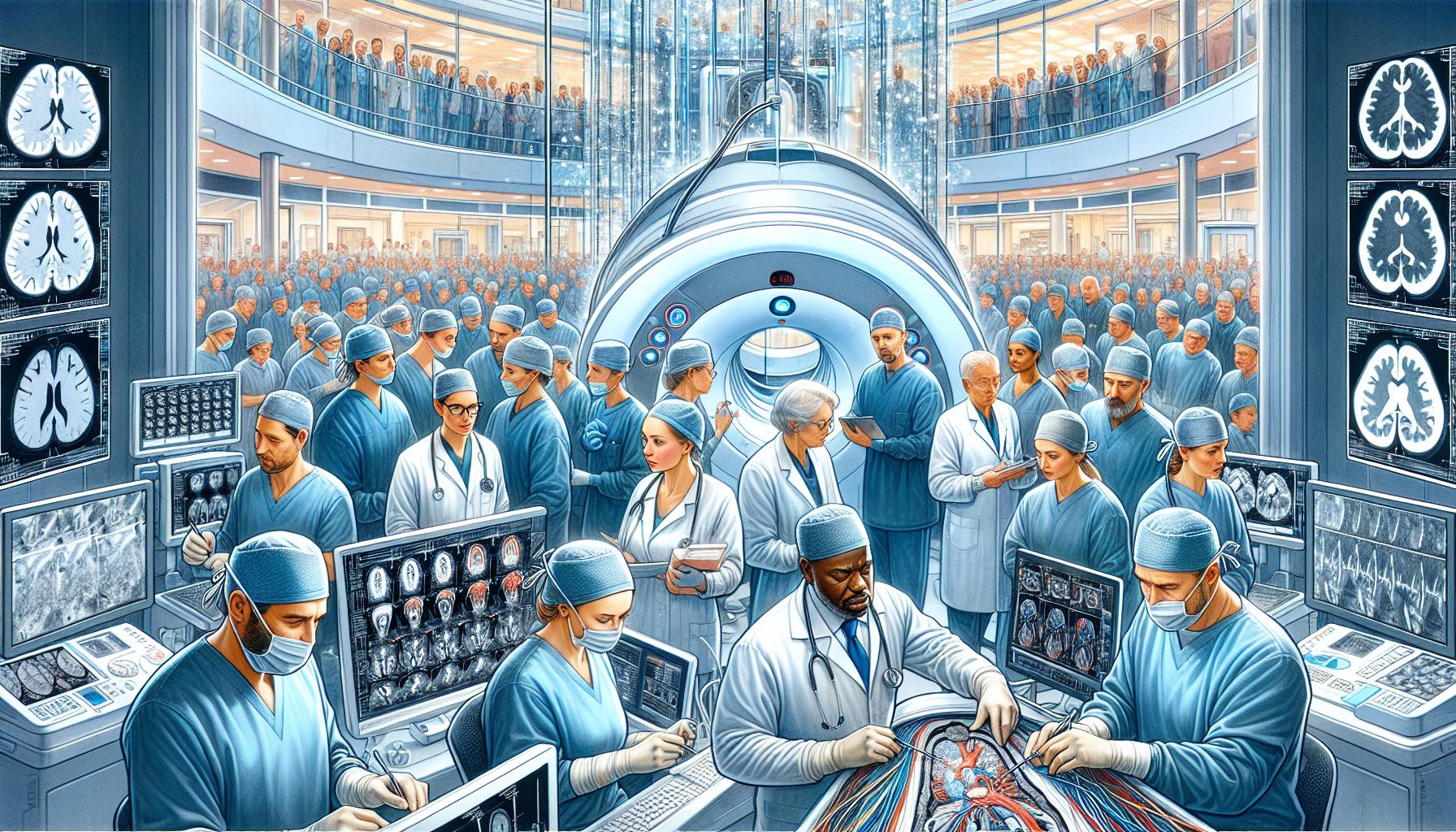Surgeons Enhance Safety and Efficacy of Gene Therapy with Real-Time MRIs
January 23, 2024
Researchers at the Ohio State Gene Therapy Institute, Wexner Medical Center, and College of Medicine are utilizing real-time magnetic resonance imaging (RT-MRIs) to improve the safety and effectiveness of brain gene therapy surgeries. This groundbreaking technique allows surgeons to closely monitor the precise delivery of gene therapy, ensuring accurate treatment in the targeted area. With the ability to visualize the therapy’s path in real-time, surgeons can now confidently administer the therapy exactly where it is needed, revolutionizing the approach to gene therapy.
Gene therapy involves modifying a person’s genes to treat or cure diseases by replacing or deactivating disease-causing genes or introducing new or altered genes. The significance of RT-MRIs lies in their ability to monitor the delivery of gene therapy while surgery is conducted, enabling precise tracking of the therapy’s position and controlling the amount of infused particles. Dr. Russell Lonser, co-author of the study and professor and chair of the Department of Neurological Surgery, emphasized the game-changing role of RT-MRIs in providing surgeons with real-time visibility during the procedure.
Previously, surgeons performed gene therapy surgery blindly, relying on cannulas to deliver the therapy without knowing its exact destination. However, RT-MRIs have changed the game by allowing surgeons to visualize the therapy’s path and confirm accurate placement of the cannulas. Dr. Asad Akhter, the study’s first author and a sixth-year neurosurgery resident at Ohio State, explained that by conducting an MRI every two to five minutes during the surgery, surgeons can ensure the gene therapy is localized correctly.
Furthermore, previous gene therapy trials lacking image-tracking technology like RT-MRIs demonstrated a lack of effectiveness due to inadequate perfusion, which refers to the delivery of oxygenated blood to the body’s tissues. RT-MRIs address this issue by providing surgeons with immediate feedback on perfusion during surgery, helping them determine if the target area is receiving adequate blood supply. This real-time image assessment has been shown to significantly enhance the efficacy of gene therapy trials.
The potential applications of real-time MRIs with gene therapy extend beyond the brain, with the technique showing promise in treating neurological disorders such as Parkinson’s, Alzheimer’s, and tumors. In fact, an international meeting is set to take place in March, where leading neurosurgeons from around the world will convene to discuss and implement this innovative approach on a global scale. With the successful integration of RT-MRIs, surgeons are on the cusp of a groundbreaking advancement in gene therapy, fostering new possibilities for patients with various neurological conditions.
Analyst comment
Positive news: Surgeons Enhance Safety and Efficacy of Gene Therapy with Real-Time MRIs
As an analyst, I anticipate that the market for gene therapy will experience significant growth and advancements in the coming years with the integration of real-time MRIs. The increased safety and effectiveness of gene therapy surgeries will likely lead to a higher adoption rate and increased investment in the field. This innovation has the potential to revolutionize the approach to gene therapy and expand its applications beyond the brain, opening up new opportunities for treating neurological disorders on a global scale.













